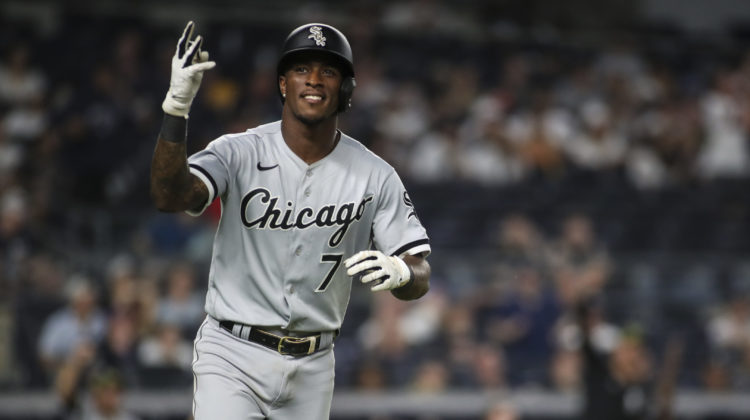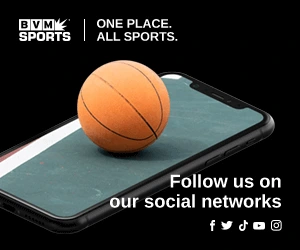
MLB has fewest Black players in history, but it can be fixed
NEW YORK (BVM) – Major League Baseball has had a troubling trend of failing to grow the game for Black athletes. According to a report done by The Institute for Diversity and Ethics in Sports, known as TIDES, 38% of MLB players were players of color, up from 37.6% in 2021, however the percentage of Black players was 7.2%, a decrease of 0.4% from 2021 and the lowest percentage since the Racial and Gender Report Card data started being collected in in 1991 when 18% of the MLB players were Black. The numbers are alarming considering the trend has been going this direction for Black players for a number of years, but some professionals see it as being a sign of the league’s failure to capitalize on its players of colors when it had the chance.
Dr. Louis Moore, a professor of history at Grand Valley State University specializing in African American history and sports history, discussed the issue in his October article on the subject and how the league failed to correct the problem and capitalize on its wealth of Black players in the late 1970s.
“You have the rise of professional football becoming really popular, basketball becoming really popular… So there’s starting to be a shift in popularity where baseball is losing it but at the same time you have real deal Black superstars in the game old and young,” Moore told BVM Sports. “You have a lot of talent there but you also have a rising problem and baseball saw it but failed to do anything about it.”
In his piece, Moore concluded that, “If MLB wants to increase Black American participation in the game, the league will have to make massive investment in youth baseball, bring more Black decision-makers into the fold, and stop repeating the same tired lines that the game isn’t as cool or appealing as basketball and football.”
The idea of youth baseball is one that Moore is a big advocate for. Due to the sport being an expensive endeavor at younger levels, with travel leagues, equipment and other issues, many of those people who can’t afford those things have a more difficult time to be seen and make waves for decision-makers.
“Back in the day when these guys were coming up they were coming up on the playground, the public school league, there were institutions in place so it was affordable,” Moore said. “Today that doesn’t exist. You have to play travel ball, you have to spend hundreds on a bat, thousands on travel, pay for coaches, all this. The access to the game is changing, not just for Black folks, but the people who don’t have the means to get there who don’t live in the suburbs and can’t travel.”
While the decision-makers in the league have not seen any negative trends for Black and minority representation, the fact that MLB only has two Black or African American managers (Dave Roberts and Dusty Baker) does show a lack of help at the top. Moore believes that the biggest way the game can adjust this issue is there needs to be an up-and-coming Black coach who can change the culture of the industry a la Sean McVay in the NFL.
“Baseball has to have somebody in place one or two where they can be that model,” Moore said. “It’s rare that you see a Black person represented as the model as this young, hot, analytical person. The face of this has to be somebody Black, it doesn’t have to be the sole face, but you have to have a Black face there to put up for everyone to see.”
Moore also sees the MLB having the resources and opportunities to put Black players in the spotlight. With a number of top talent in the league being Black like Tim Anderson, Jazz Chisholm or Hunter Greene, MLB could use those players to connect to younger athletes who see themselves in the players and that could drive interest in the game for those demographics.
“Today, [the MLB] has someone like Tim Anderson and you could lift Tim Anderson higher than anybody in this game that you want,” Moore said. “The Cincinnati Reds have Hunter Greene you could build around Hunter Greene. If you’re baseball you can’t let this young crop of Black stars go to waste, you just can’t.”
For the future of the league, Moore thinks the significance lies at the feet of the youth. In his mind, MLB needs to give more opportunities for those players who may not be able to afford it. The focus needs to be on using what the MLB has in terms of its standout Black athletes and its funding to build interest in the game from the smallest and younger leagues up.
“Every community has these [youth] leagues, what these teams can do is be all hands on deck and spend millions of dollars to fund a lot of these leagues,” Moore said. “I know some teams fund these travel teams but maybe do it at all levels and maybe figure it out to cut away the cost of baseball and open it up to everyone cause once you do you have a real opportunity to grow your game again.”
While Moore understands there is an alarming issue in baseball, he knows the problem never had to do with talent or even interest for that matter, it had to do with opportunity. If MLB can find a way to give the average Black athlete a chance to play and continue playing the game of baseball, then the league would be able to reverse the trend they’ve seen over the past couple of decades.
“I think when we deal with Black talent in the game, there’s always Black talent there and I don’t think that ever changed,” Moore said. “It’s the people that don’t get that shot.”


